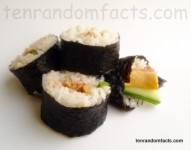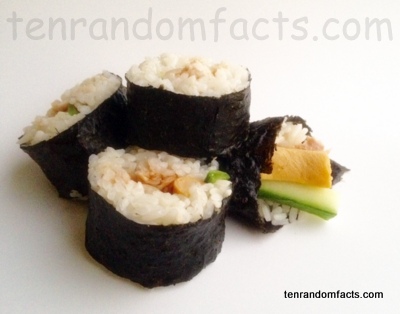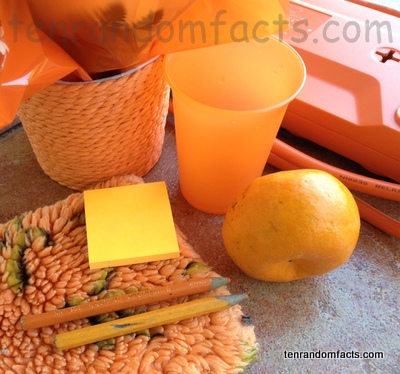
What do you like in your favourite sushi?
- Sushi is a rice-based food originating from Japan, and the rice is normally held together by, or wrapped in nori (seaweed).
- Sushi can be prepared in wide variety of styles, including hand rolled in a cone as temakizushi, rolled cylindrically as makizushi, pressed into a rectangular shape and topped with an ingredient as nigirizushi, or put in a bowl as chirashizushi.
- Rice made with rice vinegar is virtually always used as the base in sushi, while other ingredients can include specially prepared cooked egg (tamagoyaki), raw fish and other seafood, cucumber, pickled vegetables, yam and avocado.
- Soy sauce, or wasabi may be served with sushi, while green tea is commonly drunk with the dish and pickled ginger (gari) commonly accompanies the food to cleanse the palate for the next course.
- Traditional sushi, known as ‘narezushi’, originated from the 700s in Japan and surrounding areas as a way of preserving fish, as it was encased in fermented rice for many months, however, the rice was typically thrown out until the Japanese started eating it with the fish, and they eventually added vinegar to the rice, which resulted in a shortened fermentation process.
- Japanese Hanaya Yohei of Tokyo is credited with the invention of the now common, modern style sushi in the early 1800s, which was a ‘fast food’ version, small in comparison to the previous style, quick to make, and easy to eat.
- Unlike Japan, raw seafood is often not chosen as a commercial sushi filling in Western civilisations, as seafood is notorious for requiring the hassle of freezing to kill potentially harmful parasites as per safety regulations in many countries.
- Sushi may be eaten with chopsticks, although it is traditional to eat it with fingers and this is common practice in both Japan and the West.
- Sushi is typically white in colour, due to the rice, and dark green, due to the nori seafood, and other colours vary depending on the extra ingredients, while the dish is savoury and served as the main dish of a main meal, one of the dishes in a main meal, a snack, or in bento (a portable food box),
- Sushi is generally high in carbohydrates and protein, while significant quantities of other vitamins and minerals vary, depending on the fillings.
Bibliography:
Avey T, Discovering the History of Sushi, 2012, PBS, http://www.pbs.org/food/the-history-kitchen/history-of-sushi/
Sushi, 2015, Wikipedia, https://en.wikipedia.org/wiki/Sushi























